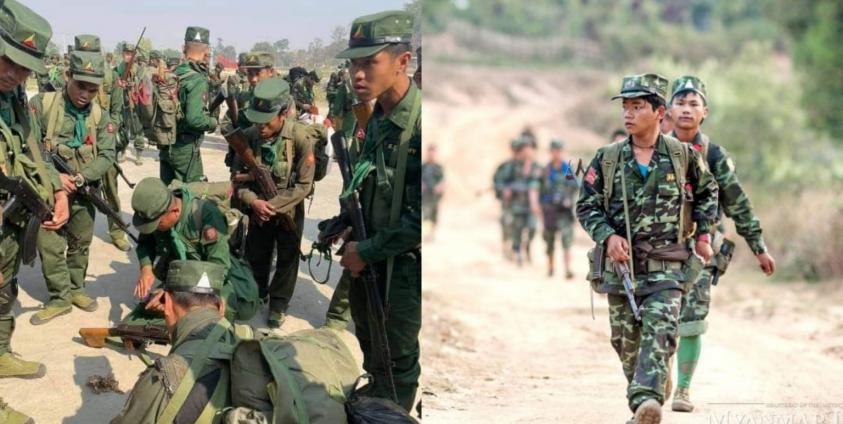Hurn Kayang — The two Shan armies have faced significant criticism on account of their covert strategy of resistance against the military regime, which kept them from being regarded as revolutionary forces.
Furthermore, while other Ethnic Armed Organizations (EAOs) and the recently formed People Defense Forces (PDFs) launched offensives against the military regime, the Shan State Progress Party/Shan State Army (SSPP/SSA) and the Restoration Council of Shan State/Shan State Army (RCSS/SSA) opted out engaging in combat. Therefore, this is worthwhile exploring in terms of what motivates the Shan army to engage in combat and why are they unable to unite.
Historically speaking, there was a significant attempt made towards Shan unity. On September 13, 1996, the three Shan armies—the Shan State Peace Council (of which the Shan State Army was a member), the Shan State Nationality Army (SSNA), and the Shan United Revolutionary Army (SURA)—merged to form a single entity known as the “Shan State Army,” accompanied by its political arm, the “Shan State National Organization.” This merger was announced with a shared vision for their collective struggle.
The agreement was endorsed by Major General Sai Nong, the Chairman of SSA, Colonel Sai Kan Yod, the General Secretary of SSNA, and Colonel Yawd Serk, the Chairman of SURA. Despite aspirations for unity and a common goal of achieving equality and self-determination for Shan State, operational challenges hindered effective cooperation.
Additionally, they have attempted to engage with the military government, the State Peace and Development Council (SPDC), to negotiate their stance. However, they were met with a directive to disband, as the military regime was concerned that their unity would disrupt national peace negotiations.
Subsequently, efforts to unify the Shan armies remained elusive until 2013, when the Committee for Shan State Unity (CSSU) was established. The CSSU, which was comprised of Shan political parties, armed groups, and civil society organizations, was intended for the sake of the Shan nationality and Shan State’s interests within the framework of Myanmar’s union.
Again, despite their agreement on a common national and political strategy in 2019 and attempts at peaceful coexistence in 2022, they encountered setbacks.
Given these historical experiences, the Shan community must learn from past shortcomings to avoid repeating mistakes in their ongoing struggle for recognition within the revolutionary movement.







